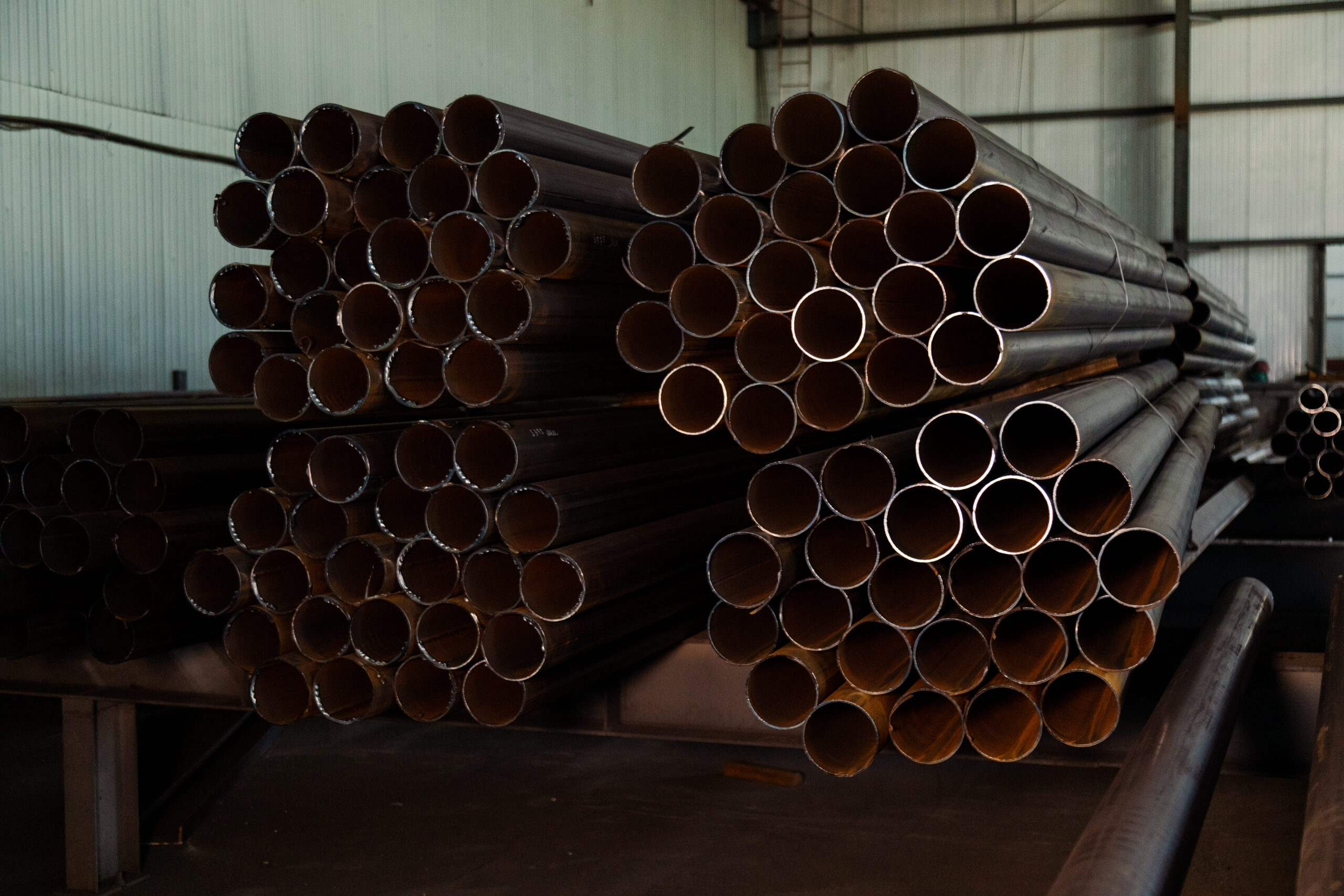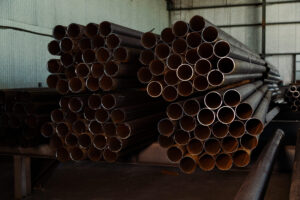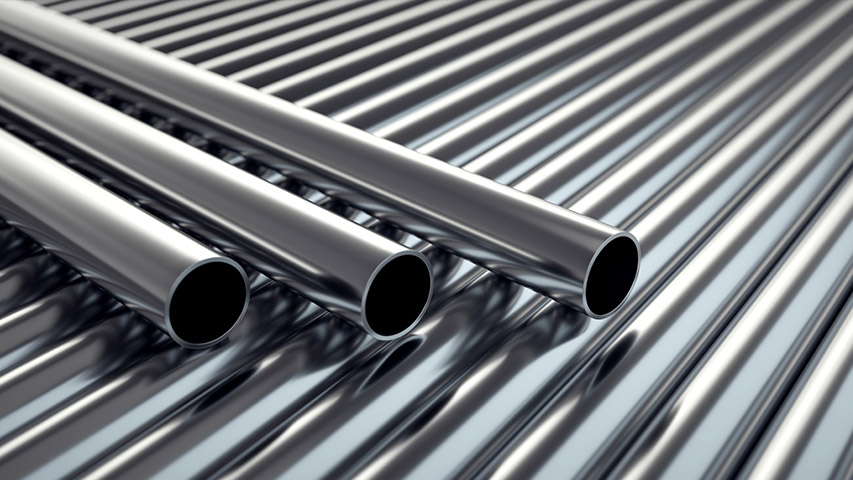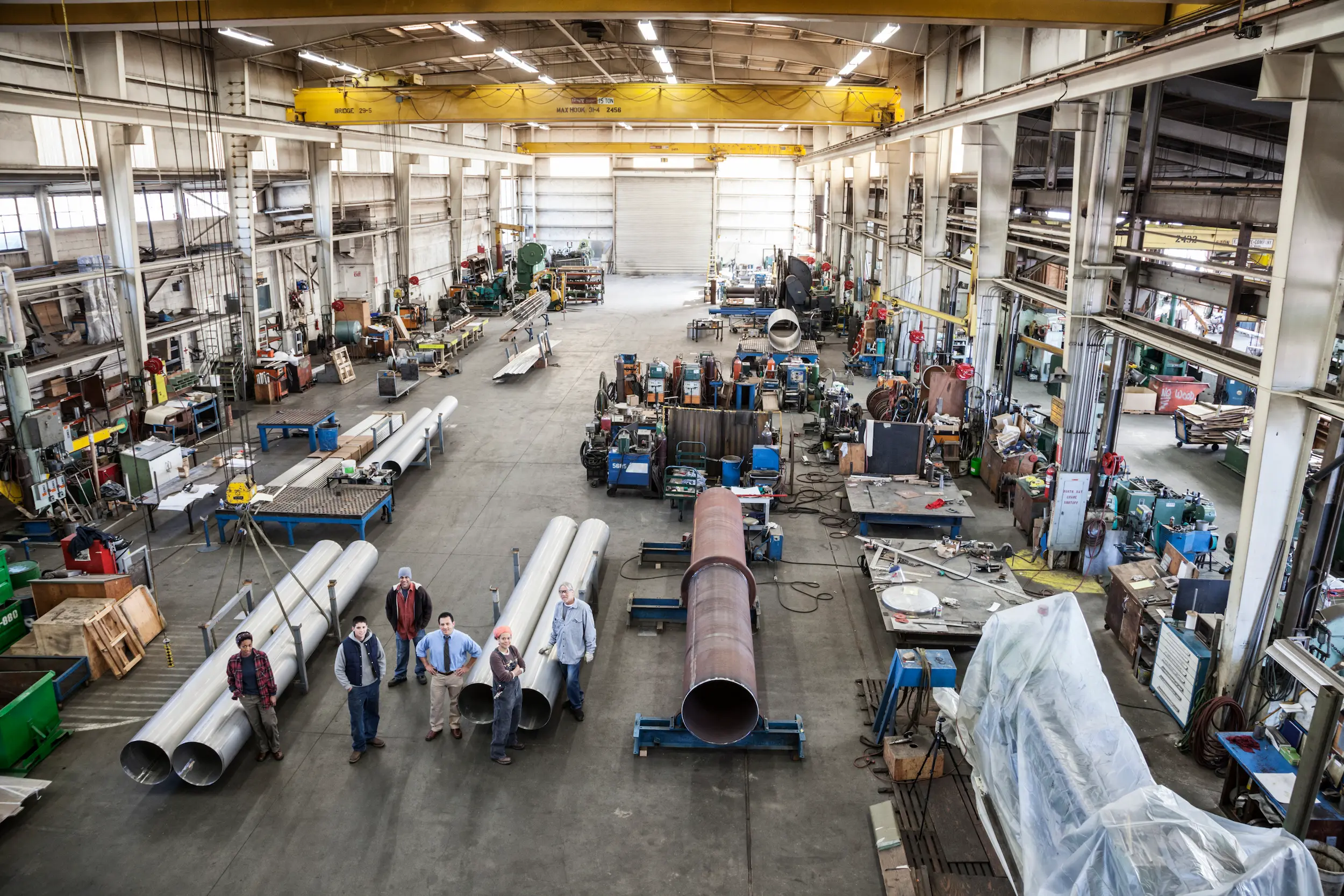Mild Steel Pipe Price Per Kg – Sachiya Steel International Private Limited
The MS pipelines are of great use in construction, manufacturing, and other industrial work since they are the most used material overall. These are the most in demand because of their low cost, long lifespan, and simple form of construction. For companies and individuals looking to make purchases without being naive, comprehension of the mild steel pipe price per kg is useful. This article will focus on mild steel pipe price per kg, the determinants of their prices, the current schanges in the market, and how to refrain from overspending while purchasing.
Knowing the mild steel pipe price per kg is crucial during bulk purchasing or when planning for a long term project. There are several factors which contribute to the changes in price levels of pipes, among them are the prices for raw materials, the level of offer and demand for the product and the general market situation.
Latest Mild Steel (MS) Pipe Price Per Kg in India (April 2025)
Here’s an updated table with more types of Mild Steel (MS) Pipes and their estimated prices per kg in India (April 2025):
MS Pipe Price per Kg (April 2025)
| MS Pipe Type | Price per Kg (INR) |
| MS Seamless Pipe | ₹80 – ₹120 |
| MS ERW Pipe | ₹65 – ₹100 |
| MS Square Pipe | ₹70 – ₹110 |
| MS Rectangular Pipe | ₹75 – ₹115 |
| MS Round Pipe | ₹60 – ₹95 |
| MS Galvanized Pipe (GI) | ₹85 – ₹130 |
| MS Black Pipe | ₹58 – ₹90 |
| MS Hollow Section Pipe | ₹72 – ₹115 |
| MS Heavy Wall Pipe | ₹90 – ₹140 |
| MS Scaffolding Pipe | ₹78 – ₹120 |
| MS Boiler Tube | ₹95 – ₹150 |
What Should I Know About Mild Steel Pipes?
Mild steel pipes have a broad range of implications because they are very easy to work with, thanks to their ductility, ease of welding, and other physical attributes. They are made from low-carbon steel, which contains a carbon amount in the 0.05 to 0.25 range. As such, they are employed in construction, water transportation, automotive, and other diverse industries. Moreover, they are available in square, rectangular, and round shapes for versatile usage.
Mild steel is fairly low-priced, which makes it very appealing to consumers. The current price in India of mild steel pipes is estimated to be around 50-80 rupees. However, the price is not fixed and depends on the state of supply chains, local demand, and the global steel prices, which fluctuate a lot. Keeping an eye on the price enables the consumer to make financially savvy purchasing choices. However, the price also does come with restrictions because it will fluctuate based on the available raw material resources, as well as market needs.

Mild steel pipes have different types, each with special characteristics and uses. These pipes differ in prices based on their types, coat, and method of production. Here is the comprehensive summary of the types of mild steel pipes along with their corresponding price brackets:
1. Black Mild Steel Pipes
These pipes are unused, meaning there have been no other coatings used to protect them from rust. The pipes are widely used for structural purposes, scaffolding, fencing, and general fabrication. The protruded black oxide layer has a very low corrosion resistance, therefore, makes these pipes completely useless for water usage without further treatment.
- Uses: Structural frameworks, construction, fencing, furniture.
- Cost Bracket: ₹50–₹75 per kg.
2. Galvanized Mild Steel Pipes (GI Pipes)
Mild steel pipes are all coated with zinc which prevents rust and corrosion hence making them useful in water pipes and outside use. The galvanization process makes it more durable and ensures a longer life span in comparison to black mild steel pipes.
- Uses: Water pipes and their maintenance, sewage, farming, fencing.
- Cost Bracket: ₹60–₹90 per kg.
3. Operating Procedures for Electric Resistance Welded (ERW)
The production process for ERW pipes involves rolling steel plates and welding the edges together resulting in uniform thickness and overall cost efficiency. These pipes are commonly utilized in plumbing, irrigation, and a variety of industrial applications where smooth surface finish and less resistance towards high pressure is required.
- Applications: Plumbing, fencing, scaffolding, automobile industry.
- Price range: ₹55–₹80 per kg.
4. Operating Procedures for Seamless Mild Steel Pipes
Seamless pipes do not have welded joints. Because of this they are simpler, stronger and more reliable for high pressure operations. This leads to their application in more complex industries such as oil and gas, power plants and chemical processing.
- Applications: Oil and gas pipelines, boiler tubes, hydraulic cylinders, power plants.
- Price range: ₹80 – ₹120 per kg.
5. Operating Procedures for Square and Rectangular Mild Steel Pipes
Architectural and other works are simplified and modernized through the use of these pipes. Because of these attributes, they are used in both load bearing and non-load bearing structures and provide excellent support in building frameworks as well as in furniture manufacturing.
- Applications: Architectural structures, furniture frames, automotive industry.
- Price range: ₹60 – ₹95 per kg.
6. Mild Steel Pipes with Special Linings
Some mild steel pipes are further protected against corrosion by the application of coatings such as epoxy, polyethylene (PE), or fusion-bonded epoxy (FBE). These pipes are employed in unique areas where protection from external elements is needed.
- Applications: Underwater pipelines, chemical industry, marine sector.
- Estimated Costs: ₹70-130 per kg.
Every kind of mild steel pipe is designed for a particular scope of activity, and their costs vary based on the production technology, material grade, and pipe purpose. Purchasers must define their requirements and weigh alternatives in order to optimize the purchase.
Market Trends and Price Fluctuations in Mild Steel Pipes
The marketplace and the state of the economy bear significant impact on the price of mild steel pipes. Mild steel pipe prices are volatile due to many elements such as international steel manufacturing, government regulation and policy, seasonal demand shifts, and the general availability of raw materials. An examination of some of these elements follows:
1. Global Steel Industry Trends
The international steel market acts as a major benchmark for determining the prices of mild steel pipes. Major industry components comprise the following:
- China’s Steel Industry: Being the largest producer of steel in the world, China greatly influences the prices of steel. In the advent of China’s increased production, steel prices are likely to decline due to oversupply.
- Shortage of Raw Materials: Sudden changes in the stocks of iron ore and coal directly impact production expenditure. If disruption in the supply chain occurs, it is likely that the prices of mild steel will go up.
- Environmental Policies: Countries that are overly cautious concerning the environmental policies applicable to steel production can lead to increased spending due to extra costs incurred to meet the economic sustainability policies.
2. Government Policies and Trade Tariffs
Such policies have a cross-beam effect on steel tariffs in different regions:
- Import Tax and Levies: Various countries place taxes on imported steel to foster local industry, which may result in the price of imported mild steel pipes to increase.
- Subsidies and Tax Policies: Government support for local steel suppliers can decrease production costs and stabilize prices.
- Anti-Dumping Regulations: Governments may levy anti-dumping duties on cheap steel imports to avert market imbalances.
3. Seasonal Demand Variations
The construction and manufacturing industries have certain predictable seasonal demand variations which have an impact on the pricing of mild steel pipes:
- Peak Demand During Summer: In the summer, infrastructure projects and construction works intensify, which leads to an increase in the demand for steel and the prices too.
- Reduced Demand During Monsoons: During rainy seasons, construction work slows resulting in lower demand and, at times, price drops.
- Year-End Inventory Clearance Sales: Some steel manufacturers reduce prices towards the end of a financial year to clear their stock which is beneficial for bulk buyers.
4. Impact of Fuel Prices and Logistics
Fuel price transportation is a factor considered when tendering for mild steel pipes:
- Fluctuations in Fuel Prices: Increased fuel prices lead to higher shipping costs which makes the products more expensive for the consumers.
- Freight and Handling Charges: Increased supply chain prohibitive freight costs due to supply chain disruptions or port congestion lead to price increases.
- Local vs. Imported Pipes: Locally manufactured pipes are generally cheaper than imported ones due to the cost associated with transporting them.
5. Economic Recovery Post Pandemic
The movement of economic recovery following the COVID-19 pandemic has caused volatility in the prices of steel:
- Supply Chain Disruptions: The acquisition of raw materials, as well as their shipping, has varying delays which has caused erratic price trends.
- Increased Infrastructure Spending: The government, especially at the federal level, is pouring funds into large scale infrastructure construction, which increases the need for steel and shifts the prices.
- Market Speculation: The anticipated changes in the price of steel by investors and traders have the ability to change the prices short term.
Factors Influencing Mild Steel Pipe Price per Kg
There are many reasons which determine the price of mild steel pipes and these reasons also determine the supply and demand of the pipes simultaneously. Some of these reasons are the cost of production and materials, brand image and reputation, pipe measurements, and economic trends. With this knowledge of mild steel pipe price per kg, the buyers can strategize how to reduce their costs. Below is a full explanation of all factors:
1. Cost of Production
The cost of materials lead to major changes in the price of production of mild steel pipes. For instance, the pipes’ main material, iron ore, is heavily influenced by the global market depending on mining output, trade laws, and even international relations. Also, alloying elements like manganese and carbon affect the price too.
- If the cost of ore increases, so does the cost of pipes.
- Raw material pricing can also be influenced by the taxes and custom fees set by the government.
2. Production Method
There are two techniques of producing mild steel pipes and both have an impact on the production price:
- Seamless Pipes: These do not have a welded joint and are thus stronger for high-pressure structural applications. They are more expensive and harder to make, so the manufacturing process is more complicated.
- Welded Pipes (ERW Pipes): These economical pipes, made by rolling steel sheets and welding the edges, are less durable than seamless pipes.
The pipe production method determines costs as well as the pipe’s application versatility.
3. Pipe Dimensions and Specifications
A mild steel pipe’s weight and size defines its price.
- Wall Thickness: Heavier and more expensive because they cannot be made with less material.
- Pipe Diameter: Increased material usage makes larger diameter pipes more expensive.
- Length and Customization: Longer specific customizable pipes lead to higher overall mild steel pipe price per kg.
4. Market Demand and Supply
Just like all other commodities, the demand and supply of mild steel pipes impacts its pricing.
- Prices often increase with higher demand in construction and infrastructure projects.
- Lower prices are seen during an oversupply of product or an economic slowdown due to lower demand.
- During specific seasons with high construction activity, prices are seen to be higher due to increased seasonal demand.
5. Brand and Manufacturer
Jindal, Tata, and APL Apollo are the reputed suppliers of mild steel pipes which, while expensive, have exceptional durability and performance. Buyers often prefer these brands which guarantee:
- Adherence to set standards (for example: compliance with ISI guidelines).
- Better quality and shelf life.
- Maintained customer service and warranty claims.
6. Transportation and Logistics Costs
The distance from the buyer to the place of manufacture determines the cost of mild steel pipes.
- Local vs. Imported Pipes: Pipes brought into the country are more expensive because of shipping costs, duties, and local taxes.
- Freight Charges: The cost of transporting pipes is high compared to other goods because they are heavy.
- Supply Chain Efficiency: Increase in prices may be a result of supply chain interruptions such as fuel price increases or delays in ports.
7. Government Policies and Taxes
The price of mild steel pipes is determined by government policy, taxation, and trade tariffs.
- GST (Goods and Services Tax): The steeper the tax rate imposed on steel products, the higher the pricing.
- Import Duties: Border taxes imposed on finished products and raw materials such as steel coming from China affect the cost of the materials.
- Subsidies and Incentives: Levels of price reductions are impacted by government support for the production of steel.
Given that the mild steel pipe price per kg is influenced by many factors, buyers should always observe market patterns and analyze different suppliers prior to making a purchase. These factors, when understood, can assist buyers in making optimal purchasing decisions all while being able to balance their budgets.
How to Get the Best Price for Mild Steel Pipes
Bargain hunting for mild steel pipes requires intricate planning, meticulous research, and smart purchasing stratgies. Keep reading to find useful pointers in order to secure a reliable and economical deal:
1. Gather Prices from Different Suppliers
Gaining the most competitive rates requires gathering quotes from different sellers. Here’s how to get these quotes:
- Ask for Several Price Estimation: Contact a range of suppliers and get price estimation for the preferred specifications.
- Assess Online Stores: IndiaMART and TradeIndia or even manufacturer specific portals have a tendency to feature low prices.
- Evaluate Retail Versus Wholesale Price: Some bulk suppliers may charge lower prices than local retailers.
- Attempt To Acquire Price Cuts: Aggressive pricing and price cuts can be negotiated for large volumes of purchase.
2. Buy in Larger Quantities to Get Discounts
Due to the economies of scale, bulk purchases typically come with cheaper prices. Consider ordering large amounts if your project requires them.
- Negotiate With Manufacturers: You are guaranteed to save some money by dealing with the manufacturers directly.
- Participate In Collective Buying Schemes: These have become quite popular in recent years. Certain businesses combine forces with other similar businesses to make large orders for wholesale prices.
- Anticipate Future Needs: For a long project that is spread over several months, ordering in advance can lead to significant savings in the long run.
3. Decide on Domestic vs. Foreign Pipes
Domestic suppliers might have more favorable pricing as a result of lower freight costs and tariff charges.
- Check Local Suppliers: Purchasing from local sources can reduce transportation expenses.
- Examine Tariffs: If foreign pipes are being considered, customs duties and taxes will need to be calculated to know the actual cost.
- Think About Delivery Times: Locally sourced products are often delivered quicker, and so cuts down project delay time, lower inventory holding expenditures, and decreases overall project costs.
4. Monitor Buying Trends And Timing
Knowing market trends can assist in deciding when to make purchases because it helps in buying at the optimal time.
- Watch Changes In The Price Of Steel: The cost of steel is influenced by supply and demand around the world, so buying when prices drop can be beneficial.
- Stay Away From High Demand Periods: Prices tend to climb during a construction boom; planning purchases for the downtime tends to be less expensive.
- Watch For Changes in Government Policies: Price controlling subsidies, import or export limitations, and tariffs need constant attention because they influence prices greatly.
5. Consider Quality With The Price Set
Purchasing at a low price does not imply compromising quality. Buying low quality pipes can actually increase maintenance or replacement costs in the future.
- Test For Certifications: Check if the pipes have been awarded an ISI, BIS, or any other quality award relevant to the issued document.
- Look for Construction Material: Ask for the mill test certificates (MTC) that would verify the chemical and mechanical properties of the parts.
- Inspect Surface Treatment and Coating: While giving pipes a coating of epoxy or galvanizing them is more expensive, it greatly increases the value and gives them more durability.
- Search For Special Deals And Discounts From Manufacturers: A lot of suppliers give out seasonal discounts, clear out sales, or bulk exclusive deals.
- Ask About Seasonal Sales: Inventory clearance at the end of the year or festive discounts can be very beneficial.
- Monitor Manufacturer Advertisements: Some large steel manufacturers put specific products to promotional prices from time to time.
- Think Of Long-Term Contracts: Generally, if you require multiple supplies over a long period of time, signing a long-term contract helps you pay a set lower rate.
Comprehensive Uses and Industrial Applications of Mild Steel Pipes
Mild steel pipes are used in a variety of industries because of their durability, cost-effectiveness, and ease of fabrication. They offer excellent mechanical properties, making them suitable for different environments and applications. Additionally, the mild steel pipe price per kg varies based on factors like size, coating, and market demand. Some key applications include:
1. Construction Industry
Mild steel pipes play a crucial role in construction projects. They are used for:
- Scaffolding: Provides temporary support during building construction.
- Structural Frameworks: Used to build bridges, high-rise buildings, and warehouses.
- Roofing Supports: Offers stability and load-bearing strength for roofing structures.
2. Water and Sewage Transportation
Galvanized mild steel pipes are widely used for carrying water and sewage due to their corrosion resistance. Applications include:
- Water Supply Networks: Used in municipal water distribution and borewell connections.
- Sewage and Drainage Systems: Helps in transporting wastewater safely over long distances.
- Irrigation Systems: Used in agricultural farms for efficient water supply.
3. Automobile Industry
Mild steel pipes are essential components in the automotive sector, where they are used for:
- Vehicle Chassis: Provides a strong framework for cars, trucks, and buses.
- Exhaust Systems: Helps in directing engine emissions safely away from the vehicle.
- Fuel Pipelines: Used in the transportation of fuel from the tank to the engine.
4. Oil and Gas Industry
The oil and gas sector relies heavily on mild steel pipes for safe and efficient operations, including:
- Pipelines: Used to transport crude oil, natural gas, and refined petroleum products.
- Drilling Equipment: Supports drilling rigs and offshore platforms.
- Refineries and Processing Plants: Used in chemical processing and storage units.
5. Furniture Manufacturing
Mild steel pipes are extensively used in the furniture industry for making:
- Bed Frames and Chairs: Provides a sturdy structure for household and office furniture.
- Table Frames and Shelving Units: Offers durability and stability for commercial and industrial furniture.
- Decorative Elements: Used for aesthetic designs in modern furniture.
Since mild steel pipes are widely used across industries, the mild steel pipe price per kg fluctuates depending on material quality, coating type, and supplier pricing trends. Buyers should compare options to find the best deal for their specific needs.
Conclusion
Sachiya Steel International Private Limited know how essential it is to track market developments and prices as it pertains to mild steel pipes to enable buyers make smart purchasing decisions. Companies can plan their procurement strategies to achieve the most favorable pricing by monitoring global steel production, trade policies, seasonal demand shifts, and logistics. Knowing the price of mild steel pipes per kg makes it easier for buyers to shop around and make sensible decisions.
Keeping track of market developments can help limit unnecessary expenditures with regard to purchasing steel on the part of companies and individual consumers. The price of mild steel pipes per kg is subject to variation with material grade quality and mark-up, hence it is important to be knowledgeable before indulging in shopping.
Mild Steel Pipe

The MS pipelines are of great use in construction, manufacturing, and other industrial work since they are the most used material overall. These are the most in demand because of their low cost, long lifespan, and simple form of construction. For companies and individuals looking to make purchases without being naive, comprehension of the mild steel pipe cost per kg is useful. This article will focus on mild steel pipe price per kg, the determinants of their prices, the current schanges in the market, and how to refrain from overspending while purchasing.
Product Brand: Sachiya Steel International
Product Currency: INR
Product Price: 65
Price Valid Until: 2027-12-09
Product In-Stock: InStock
5

